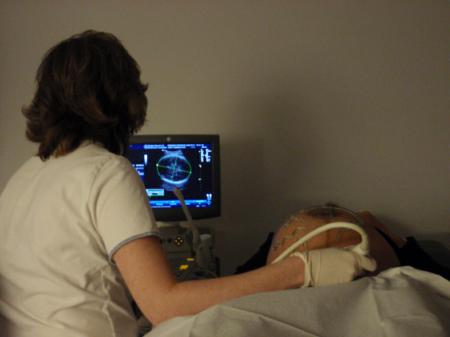Using technology to humanize precious life
Ultrasound technology was in its early days when my wife and I were having children. Pictures of our babies in utero always looked like Rohrschach blots to me. I couldn't tell top from bottom. The doctors could, though. It became possible for the first time to tell the sex of the baby before it was born.
We never wanted to know, because we thought it would spoil the surprise or the anticipation. Our ignorance of our babies' sex also kept the discussion of names more interesting -- at least temporarily.
There were some drawbacks to not knowing. We had a harder time buying clothes and decorating for the baby. We were driven toward the green and yellow parts of the color palette (not my favorites). But it all seemed worth it for that moment when we could call our parents and siblings and announce, "It's a girl!"
Our children have taken the other course. Ultrasound pictures nowadays are almost photographic in clarity. You have to avoid looking too closely if you want to remain in the dark. And as one of our daughters wisely observed, you are so excited when the baby is born that finding out the sex at the same time doesn't perceptibly increase the sum total of happiness.
This has led to a whole new set of conventions. Two of our girls are pregnant right now, and they discussed having a reveal party when we were all on vacation together. (Ultimately, they couldn't wait that long.) When you know the sex, you also can name your unborn child. Perhaps you inevitably do.
You have seen her picture and shown it to her siblings. You want some way of talking about her. So she is already Clara or Gabriella.
I really like our children's choice in this because it is irresistibly pro-life. Once you have seen your baby, heard her heartbeat, given her a name and introduced her to her brothers and sisters, once you have painted her room and bought her onesies stamped "Clara," you would have to be some kind of monster to kill her before she could draw her first breath.
The Knights of Columbus have turned this natural human impulse to good use. Half a dozen years ago, they began buying ultrasound machines and giving them away to pregnancy care centers. No one on any side of the abortion debate could possibly object. Ultrasounds are medically indicated for a variety of diagnostic reasons throughout pregnancy, but once you have one, nature takes its course -- for most people.
This is why the videos recently released by the Center for Medical Progress have been watched so attentively. The Planned Parenthood officials captured on film seem impervious to the feelings most people have toward babies. They talk about their organization's ability to deliver "intact fetal cadavers," or split "the specimens into different shipments," referring to them as "line items."
The senior director for medical services at Planned Parenthood explains the technique for harvesting heart, lung and liver: "I'm going to basically crush below, I'm going to crush above and I'm going to see if I can get it all intact."
It's chilling. The public debate has focused on the legality of fetal tissue sales and whether Planned Parenthood is making a profit. But aren't we missing the point? We're talking about dismembering Clara and Gabriella and selling their organs as "line items."
Our kids have it right. The more pictures people take of their unborn children, the sooner they give them names and make them part of the family, the less likely they are to let them fall into the clutches of Planned Parenthood.
JOHN GARVEY IS THE PRESIDENT OF THE CATHOLIC UNIVERSITY OF AMERICA IN WASHINGTON.
- Garvey is president of The Catholic University of America in Washington, D.C.



















